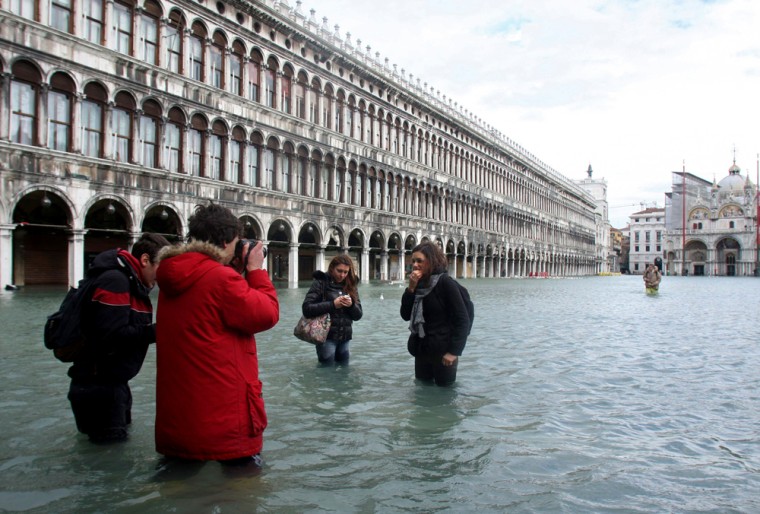
To protect Venice from periodic floods that are increasingly heightened by the double whammy of rising seas levels and sinking land, a team of Italian researchers suggests lifting up the canal-laced city by pumping seawater into the aquifers below it.
Doing so could result in a uniform uplift of about 30 centimeters over a 10-year period of steady, coordinated pumping via a series of 12 wells that circle the city, according to a study reported in the journal Water Resources Research.
The idea isn't entirely new, but until now its applicability was clouded by a limited understanding of Venice's underlying soils.
The researchers overcame this obstacle by combing through seismic data — obtained in the 1980s by an Italian oil and gas company — to create a 3-D reconstruction of the soils.
"This allowed them to confirm the presence of a continuous layer of impermeable clay below which injected water could increase pore pressure," Scott K. Johnson reports for Ars Technica.
Pore pressure corresponds to water between grains of sediment that can bear some of the load. Subsidence occurs when water is pumped out — as occurred in Venice in the mid-1900s — and the grains pack together, causing the land to sink.
In theory, pumping water back into the soils could reverse this trend, but in reality a full recovery isn't possible, notes Ars Technica.
However, the achievable uplift is sufficient to curb some of Venice's periodic flooding.
Importantly, the coordinated injection of the seawater can prevent one side of the city rising up faster than another, which could crumble the infrastructure — buildings, roads, etc. — that the project aims to protect.
While the cost of the undertaking has been estimated at more than $100 million, the raised up land would reduce operating costs for the MOSE flood gate project meant to stop the rising waters from entering the city at all.
And given that tourism generates at least $2 billion a year in Venice, according to National Geographic, that seems like a small price to pay even for a country at the forefront of the European debt crisis.
What's more, if this approach works in Venice, it might also find use in other parts of the world threatened by rising seas, including Shanghai, New York, New Orleans, Miami, Cairo, Amsterdam and Tokyo.
More on Venice and rising seas:
- Rising seas threaten Shanghai, other big cities
- For Venetians, tourism is no Gondola ride
- Experts float new idea to rescue Venice
- Group fears port work will sink Venice
- Venice flooded as Venice's bad weather continues
John Roach is a contributing writer for msnbc.com. To learn more about him, check out his website. For more of our Future of Technology series, watch the featured video below.